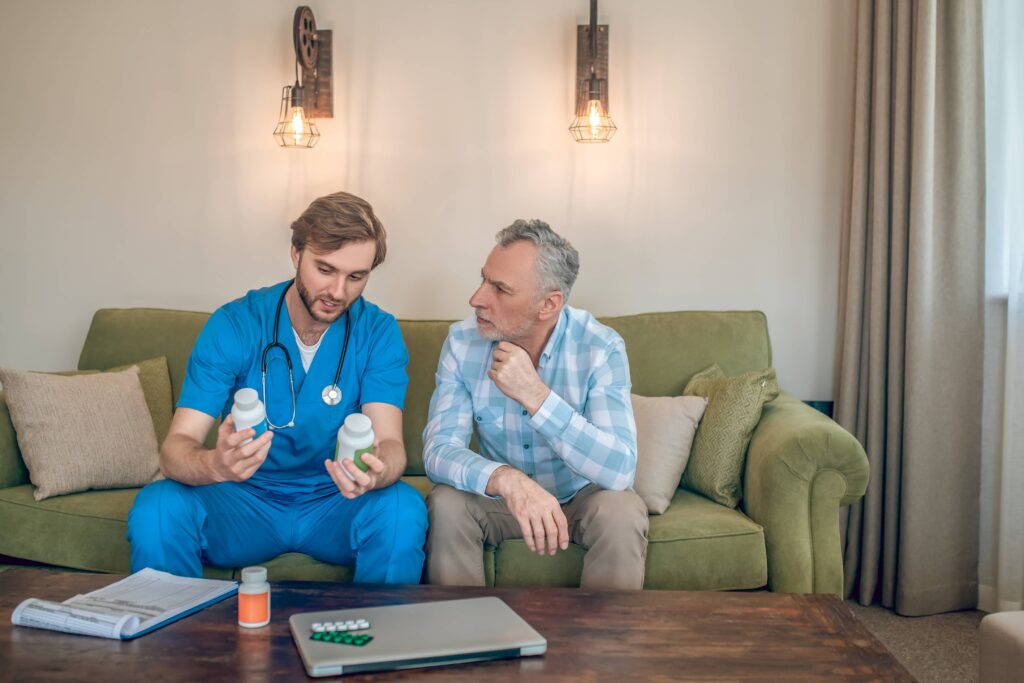When patients receive care at home, the comfort of familiar surroundings often supports faster healing and better mental well-being. But home health services also carry a serious responsibility, ensuring that medical treatment is delivered safely, effectively, and in compliance with healthcare regulations.
That’s where physician care plan oversight steps in. It forms the backbone of quality care, connecting physicians, nurses, caregivers, and patients into one coordinated effort.
What Is Physician Care Plan Oversight in Home Health?
Physician oversight in home health refers to the active involvement of a licensed physician in reviewing, monitoring, and guiding the care plan created for a patient receiving services at home. While nurses, therapists, and aides provide day-to-day care, it is the physician who ensures that all activities align with medical best practices and the patient’s overall treatment goals.
This oversight is not just a regulatory checkbox—it’s about accountability, coordination, and protecting patient safety. It helps ensure that every treatment, medication, and therapy fits into a broader medical plan tailored to each individual.
Why Oversight Is Crucial for Quality
1. Consistency of Care
Without physician oversight, care can become fragmented. Different providers might interpret treatment goals differently, which could lead to errors or conflicting therapies. Oversight ensures consistency across the board.
2. Patient Safety
Many patients in home health are elderly, chronically ill, or recovering from major procedures. These conditions make them more vulnerable to complications. Physician oversight reduces risks by keeping a medical professional involved in every critical decision.
3. Regulatory Compliance
Medicare and Medicaid require physician oversight for reimbursement. Inadequate documentation or a missing physician signature can lead to denied claims and financial losses for agencies. Beyond finances, compliance reinforces a culture of accountability.
4. Improved Outcomes
When physicians regularly monitor care plans, they can adjust medications, recommend therapies, or intervene early when problems arise. This proactive approach often prevents hospital readmissions and improves long-term health outcomes.
The Physician’s Role in Care Plan Oversight
A physician’s involvement in home health isn’t limited to signing off on paperwork. Their role is hands-on and impactful:
- Reviewing Care Plans: Making sure treatment goals are realistic and safe.
- Approving Changes: Adjusting care plans as patient conditions evolve.
- Medication Oversight: Ensuring prescriptions are correct and avoiding harmful drug interactions.
- Monitoring Progress: Tracking whether goals are being met or need modification.
- Coordinating with Staff: Communicating with nurses, therapists, and aides to provide unified care.
This level of supervision brings medical expertise directly into the home setting, elevating the quality of care patients receive.
Benefits for Patients and Families
Patients and their families often feel more confident knowing that a physician is involved in care oversight. It provides reassurance that treatments are not just routine, but carefully monitored by a medical expert.
- Peace of Mind: Families know that the care being provided is medically sound.
- Better Communication: Physicians can explain treatment progress and address concerns directly.
- Personalization: Oversight ensures care isn’t one-size-fits-all but customized to the patient’s unique health profile.
Benefits for Agencies and Providers
For home health agencies, physician oversight is equally valuable. It helps maintain compliance, avoid liability, and strengthen the agency’s reputation.
- Regulatory Protection: Detailed oversight records help meet CMS and state requirements.
- Risk Reduction: Oversight decreases malpractice risks by ensuring treatment aligns with medical standards.
- Operational Efficiency: Coordinated care reduces duplication of services and streamlines communication between providers.
Challenges in Physician Oversight
While the benefits are clear, implementing effective oversight comes with challenges:
- Time Constraints: Physicians often juggle multiple responsibilities, leaving little time for in-depth review.
- Documentation Burden: Oversight requires detailed paperwork, which can be tedious.
- Communication Gaps: Without strong systems, information may not flow smoothly between providers and the overseeing physician.
These challenges highlight the importance of technology and structured systems in making physician oversight efficient and reliable.
The Future of Physician Oversight in Home Health
As home health expands, the demand for stronger physician involvement grows as well. Telemedicine is transforming the way oversight works, giving doctors the ability to review patient progress virtually and consult with care teams instantly. Digital platforms are simplifying documentation, reducing the compliance burden on providers. In fact, California physician oversight requirements highlight how technology can make monitoring more efficient while ensuring patient safety and regulatory compliance.
The future points toward a model where oversight is both comprehensive and efficient ensuring high-quality care while reducing the strain on providers.
Conclusion
Home health care works best when it’s guided by expertise, accountability, and compassion. Physician care plan oversight ensures that patients receive safe, effective, and well-coordinated treatment in the comfort of their homes. It bridges the gap between daily care delivery and long-term medical outcomes, protecting patients, families, and providers alike.

